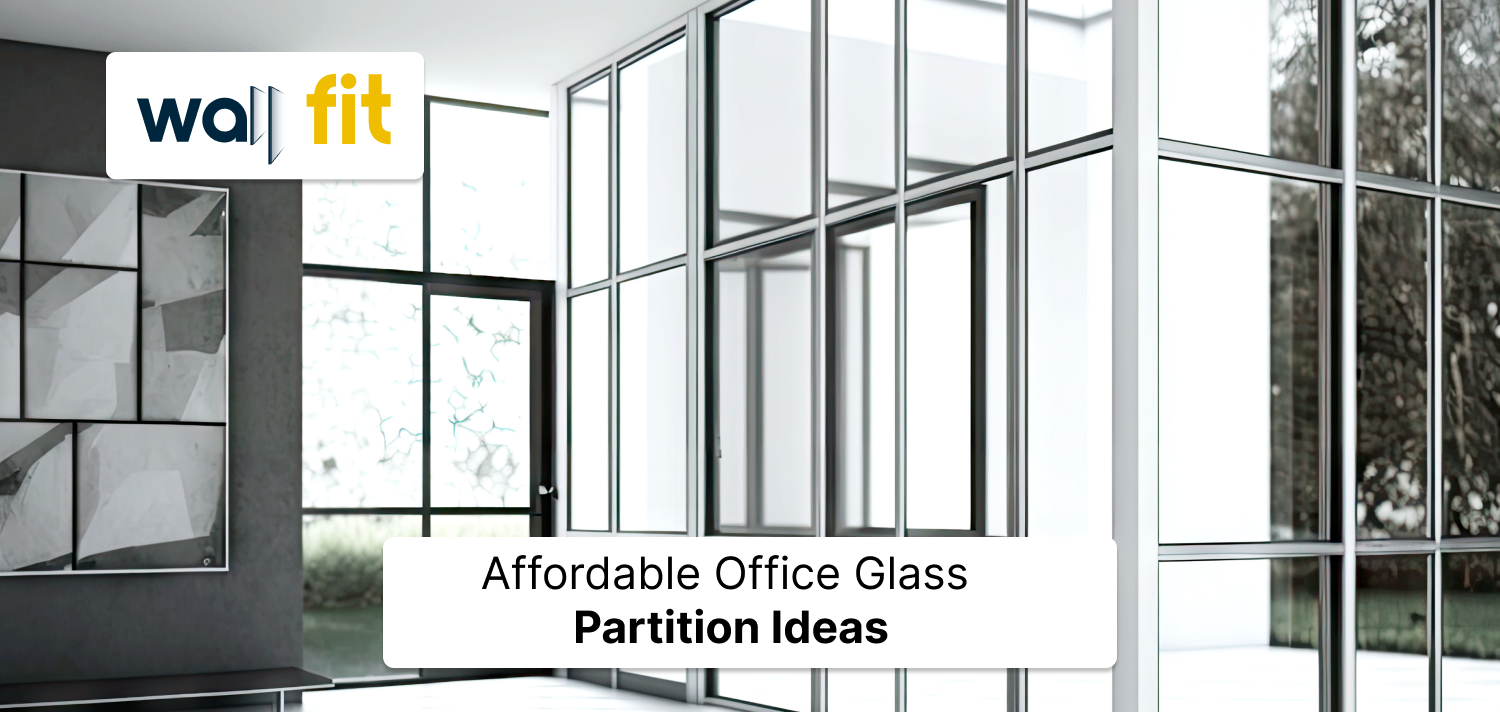
Install Your Glass Wall Partition Office the Easy Way
Home Complete Guide to Installing Glass Wall Partition Office Started With a Small Idea Rajesh was running a startup in
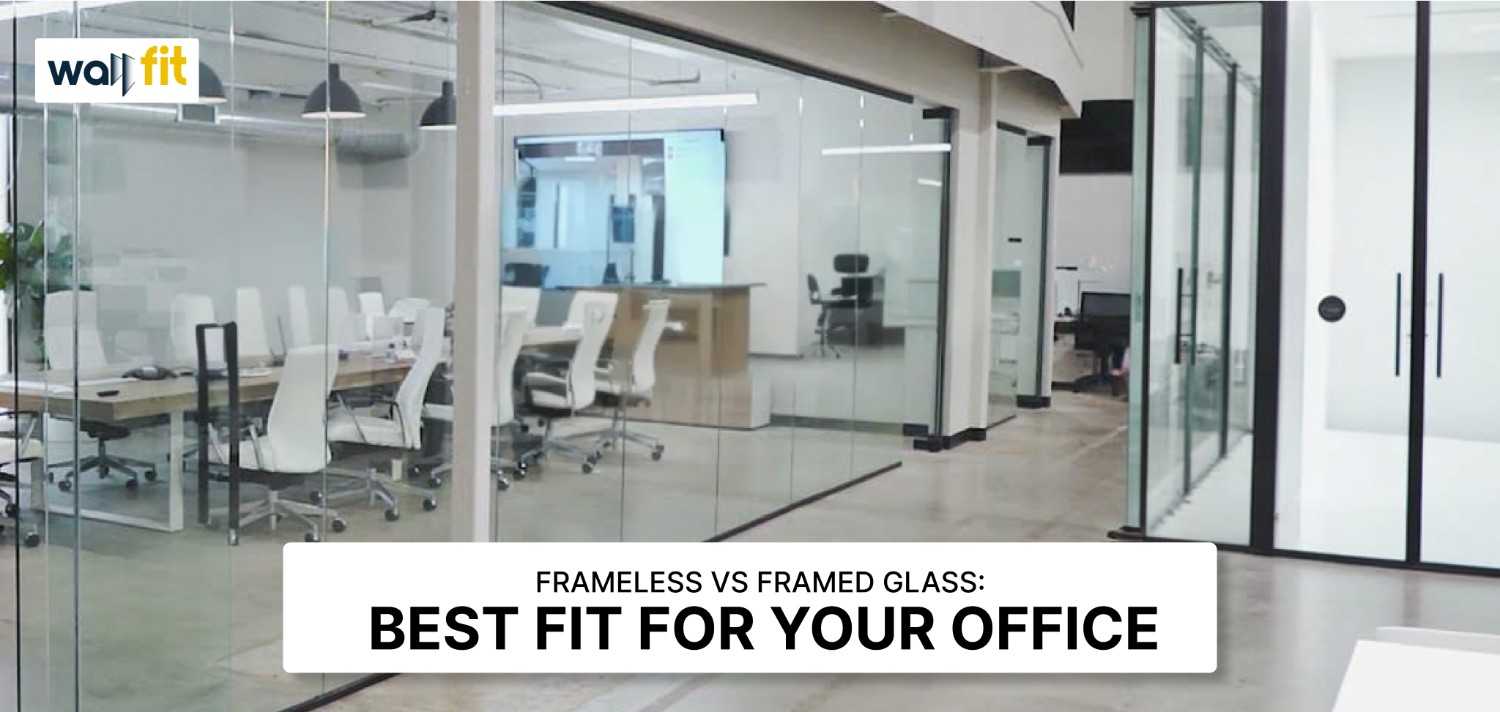
Open, bright offices are everywhere now, but finding the right type of glass partition can feel overwhelming. Frameless and framed glass partitions each bring their own benefits to a modern workspace, from sleek aesthetics to practical performance. Deciding which style to use can impact everything from your office’s look to how it functions day-to-day.
If you’re curious about why glass partitions keep popping up in stylish offices, you’re not alone. The push for flexible, light-filled spaces has sent demand for glass office walls soaring. There’s no single answer for every business—your best choice will come down to what matters most: budget, style, privacy, or sound control. This article breaks down the real differences between frameless and framed glass partitions, helping you decide what suits your space best. You’ll also get insights into current modern office glass partition trends so you can make a smart, future-ready choice.
Modern offices are embracing glass not just for looks, but for the many ways it can transform a workspace. Glass partitions let in daylight, open up sightlines, and create distinct spaces without closing everyone off. Choosing between frameless and framed partitions means weighing up design choices, practical needs, and the feel you want for your team. A simple guide to both options.
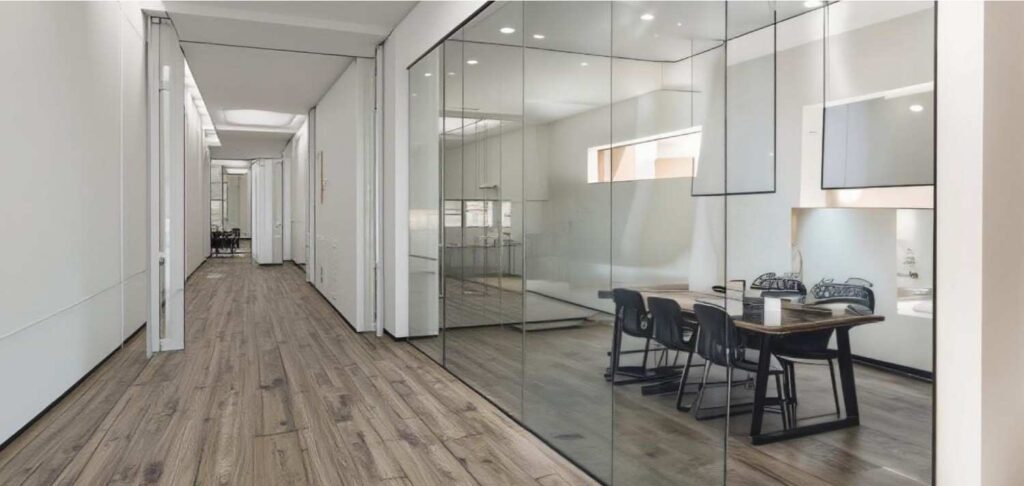
Frameless glass partitions use solid panels of glass held together with the least hardware possible. There are no bulky frames interrupting views—just pure glass, clean lines, and lots of sunlight streaming in. These partitions are often made with strong tempered or laminated glass for safety and durability.
The appeal of frameless designs goes beyond looks. Offices get:
Customization is key here. You can pick different glass thicknesses, add frosted sections for privacy, or even choose colored glass for a unique style. Frameless partitions work well for open-plan offices, meeting rooms, collaboration zones, or anywhere you want light, flow, and an uncluttered look. For more on their design potential, check insights on frameless and modern office glass partition styles.
Want even more details? Here’s a helpful breakdown of frameless glass partition types and uses.
Framed glass partitions surround each glass panel with a visible edge—usually metal like aluminum or steel, but sometimes wood. These frames add structure and offer a wide range of installation options.
With a framed system, you get:
Installing a framed partition is usually quicker since the system is made for easy fitting into most spaces. They are a top pick for offices needing both private and open areas, like boardrooms, departments with confidential work, or spaces that need extra soundproofing.
Wondering about specific choices? Check out all the single glazed partition options to see which framed types align with your privacy or style needs. More details comparing framed setups can be found in this article on framed vs. frameless glass partitions.
Both frameless and framed systems have a place in today’s offices. The right pick hinges on the balance you want between transparency, privacy, and design impact.
Choosing between frameless and framed glass partitions means looking deeper than surface style. Each system offers a mix of strengths and trade-offs that affect the entire office experience. From the way light moves through your space to how private a meeting really feels, these factors often shape employee satisfaction as much as overall appearance does.
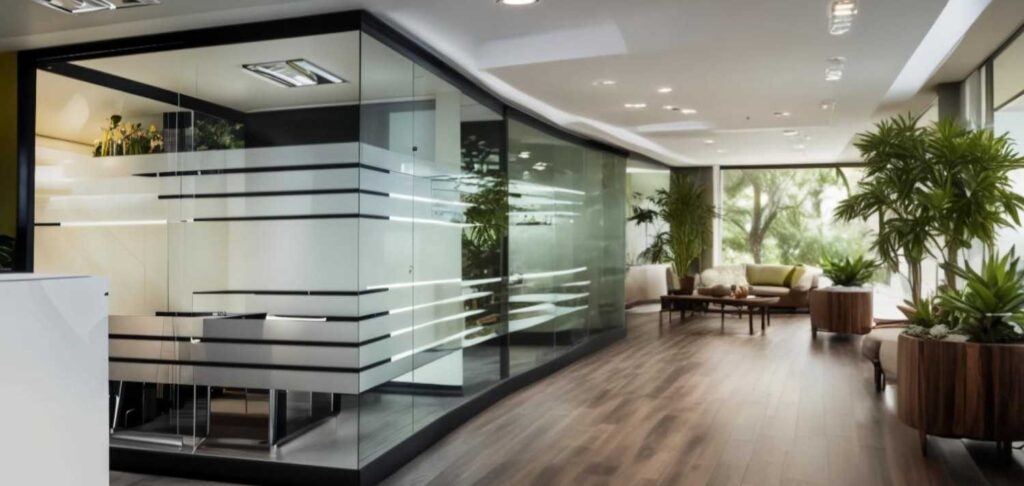
Frameless glass partitions are all about light and simplicity. Their clean, uninterrupted lines make spaces look bigger and create a high-end, modern feel. They’re perfect for designs that call for minimalism or want to keep visual flow open between areas. These systems also reflect natural light deeper into the workspace, making even small offices appear bright and welcoming.
Framed glass partitions, on the other hand, introduce visible metal or wood edges that define each panel. This can add boldness or structure to the room. Framed options work well for offices wanting contrast or industrial touches, and they deliver a strong visual anchor in busy open spaces. With frames available in a range of finishes, you can fine-tune the look to match your brand—from warm and subtle to dark and dramatic.
If you’re seeking ways to customize appearance further, explore best office glass partition design ideas for inspiration on colors, patterns, and segmentation.
Learn more about design contrasts from Framed vs Frameless Glass Partitions.
Glass partitions change the soundscape of your office. While both systems block a surprising amount of daily noise, framed glass partitions often edge ahead in privacy and sound dampening. Frames let you use double-glazed or thicker glass, which shields against outside chatter and softens echoes in meeting rooms. That makes framed partitions a smart pick for boardrooms, HR offices, and anywhere quiet matters.
Frameless options use strong seals, but they rarely match the acoustic barrier of framed panels. The open look means fewer barriers to sound transfer, which is fine for collaborative areas that don’t need hush-hush privacy but less ideal for confidential discussions.
Want to improve room privacy even more? Ceiling-mounted acoustic panels or sound-absorbing wall features can help. For detailed insights, see how glass partitions impact room acoustics.
Changing office needs demand partitions that adapt. Frameless systems are easy to move and reconfigure if you expect to redesign often. Their lack of heavy frames means fewer parts to manage during a future layout change.
Framed glass partitions, on the other hand, excel in durability. The frame acts as armor, protecting glass from bumps and dings—a big benefit in busy offices with lots of foot traffic. They’re less likely to chip or break when hit. Both types use tempered glass for safety, meaning they withstand everyday knocks far better than you might expect.
When it comes to maintenance:
If productivity and easy care are top priorities, check out how glass partition designs enhance workflow and maintenance and why businesses prioritize these features. For more on ruggedness, see benefits of glass partition walls in modern offices.
Quick Recap:
Upfront cost is usually lower for framed glass partitions, especially when outfitting larger spaces. Their panel designs and standardized hardware make installation faster and less expensive. For businesses focused on managing renovation budgets, this style often wins on cost alone.
Frameless systems tend to land at a higher price point. Their bespoke hardware, thicker glass, and installation precision increase labor and material costs. However, their timeless look can boost long-term office appeal and attract clients or top talent—paying for itself through positive impressions.
Here’s a quick way to match glass partition types with business needs:
Check the detailed guide on key cost factors for glass office partitions for tips to plan wisely.
| Feature | Frameless | Framed |
|---|---|---|
| Appearance | Minimal, clean, modern | Defined, bold, versatile |
| Sound Insulation | Moderate | Higher |
| Flexibility | Adaptable | Very durable |
| Maintenance | Easy glass cleaning | Adds frame upkeep |
| Cost | Higher upfront | More budget-friendly |
If you’re considering custom glass partitioning and want more inspiration, check out the best office glass partition design ideas.
This side-by-side look should help you get a clear sense of which option will truly fit your office now—and as your needs grow.
Picking the right glass partition is about more than just style. The decision affects how your team works, how your office looks, and even how it feels to spend time there. Frameless and framed glass partitions both have strong points, but each one works best in certain situations. To help you figure out which matches your office, let’s break down practical scenarios, company needs, and the unique benefits of each type.
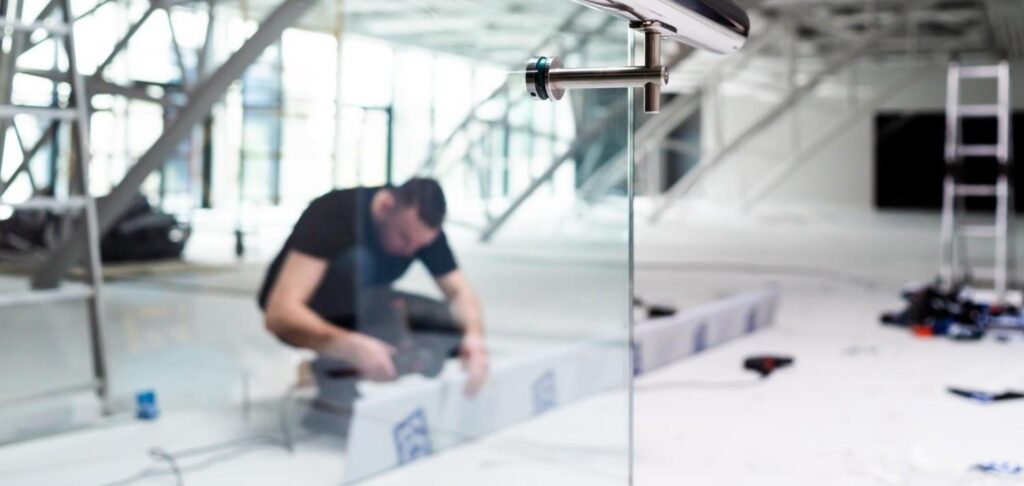
Every office has different demands. Use this simple decision guide as a starting point to steer your choice:
No single answer fits every company. Balance your need for a stylish space with day-to-day function.
Don’t choose based on looks alone—think about how your team works and what you want to project. Here’s what to ask before deciding:
As you weigh your choices, remember to factor in your office’s brand voice and workflow. To see what’s hot right now and spark ideas, check out the latest top 10 modern office glass partition trends.
Let’s make it practical. Think about which scenario sounds like your office:
For deeper inspiration on customizing layouts, see these expert takes on glass partition buyer’s guides.
Here’s a final rundown to make the decision easier:
| Scenario | Frameless | Framed |
|---|---|---|
| Style Impact | High, clean, modern | Bold, flexible, varied |
| Sound Control | Moderate | Strong |
| Cost | More upfront | More budget options |
| Flexibility | Great for light, open spaces | Tough and moveable |
| Ideal For | Startups, creative, open plans | Private, high-traffic, quiet space |
When choosing, remember: the glass you pick shapes how people work, talk, and feel in your office. If you want more details on finding the ideal fit, this guide on choosing glass partitions for office space sums up key decision points. For visual design options and finish choices, explore single glazed partition options.
Finding the right glass partition is about aligning your office’s look and daily needs. Your final choice should feel right not just for today, but for years to come.
Choosing between frameless and framed glass partitions shapes more than your office’s look—it changes how your team feels, collaborates, and stays focused. Frameless walls keep things open and bright, giving a sleek, modern feel. Framed partitions bring more privacy and help block noise, which is great for spaces needing focus.
Think about what matters most: Are you looking for a high-end, open space or a quieter, more private setup? Matching your partition choice to your office style and workflow makes all the difference. You can always combine both options. Many offices now combine both styles to fit their unique culture and needs.
To see which features fit your office goals, it helps to look at expert perspectives on best office glass partition design ideas. Every office is different—but the right glass partition will create a space where your team can do their best work. Thanks for reading, and feel free to share your thoughts or reach out to discuss what might work best for your space.

Home Complete Guide to Installing Glass Wall Partition Office Started With a Small Idea Rajesh was running a startup in

Home Affordable Office Glass Partition Ideas A Report from a Bangalore Startup Office In 2023, Anil started a digital marketing
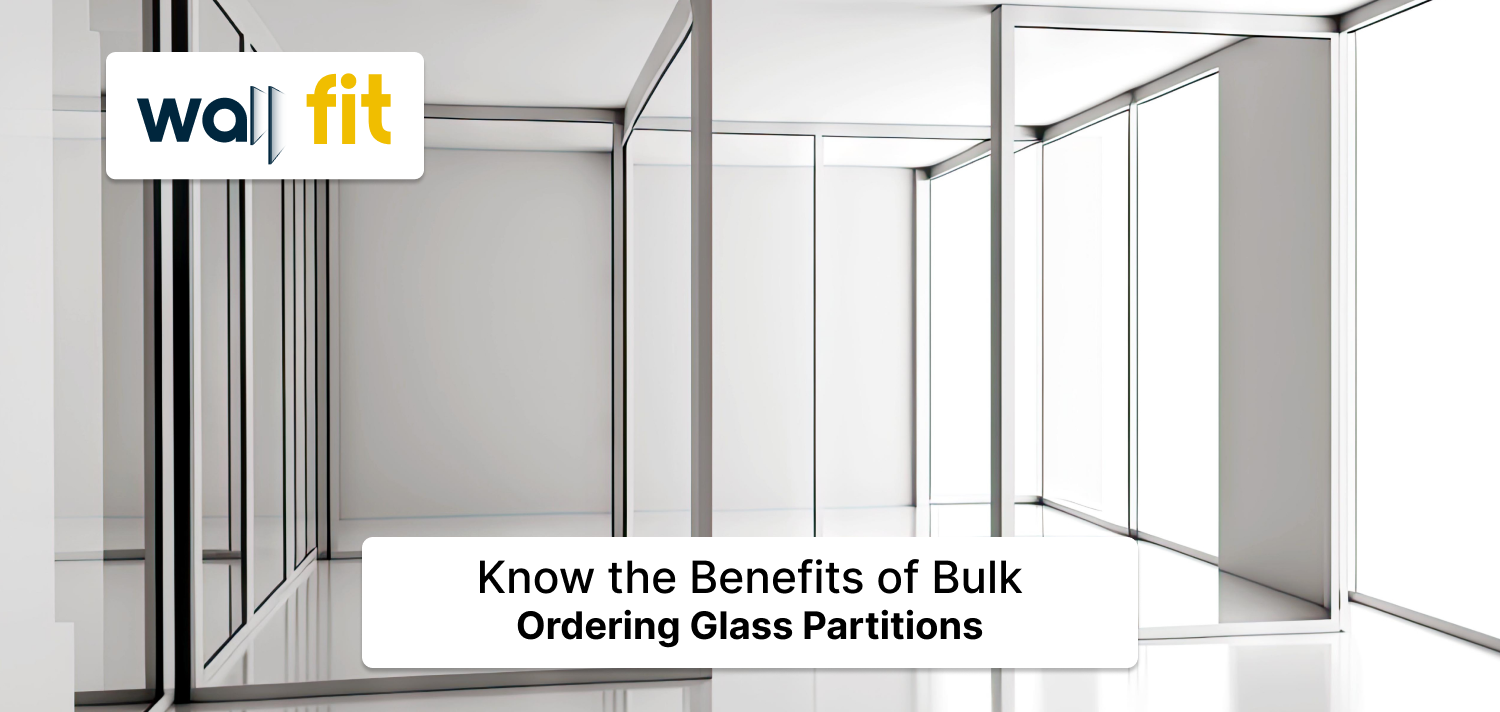
Home Bulk Purchasing Glass Partitions: Benefits and Considerations A Real Story from a Growing Business Ravi had just expanded his